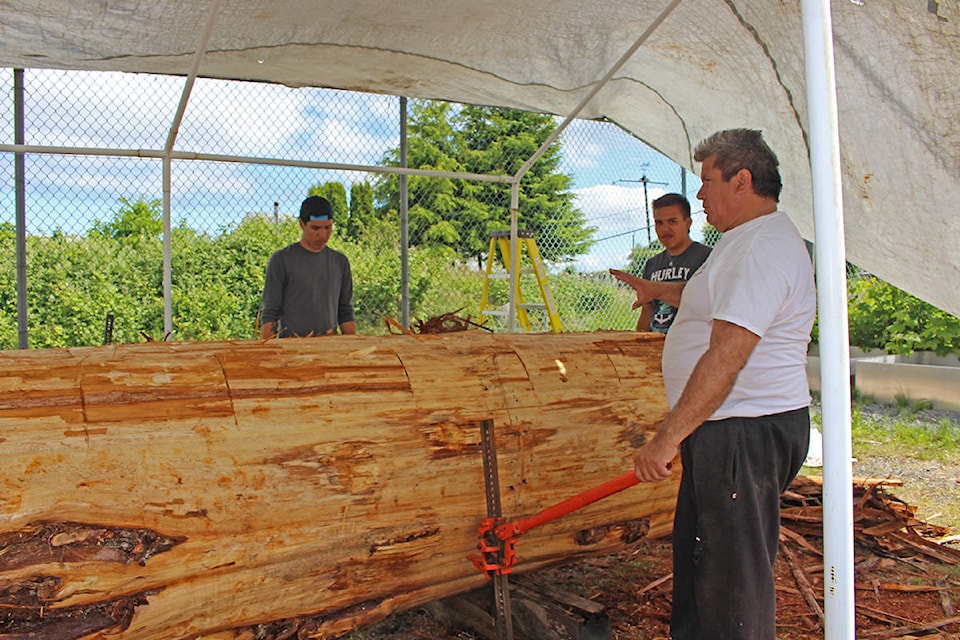‘Namgis artist Chief Don Svanvik is passing down his knowledge of carving to students at North Island Secondary School (NISS).
Svanvik is working with the students to carve a new 20-foot totem pole that will stand in the middle of the grassy area directly in front of NISS once it’s completed.
“I think it’s important that we can pass down our knowledge about carving and tradition to our children and this is the perfect setting,” said Svanvik. “In our tradition, in all traditions, you pass on the knowledge to the younger people. Maybe some of these young people will go on to be carvers, or maybe something here will inspire them.”
Svanvik was born in Alert Bay in 1958 and began carving in the early 1980s.
He was friends with carvers and one day decided to try it for himself, however, his interest in art began even before that.
“Friends of mine - when we were nine or 10 years old, we would make drawings, paint or colour them, and then sell them to the tourists,” said Svanvik. “Not for very much, but just enough to buy a pop or chips.”
Svanvik’s first carving teacher was Chief Beau Dick, who passed away a few months ago. He also cites artists Wayne Alfred, Sandy Johnson, Harold Alfred, Bruce Alfred, Doug Cranmer, and Calvin Hunt as influences.
“Working with different people is a really good idea, because it gives you different perspectives on how to do things. That’s all a part of creating your own style,” Svanvik said.
He also noted it’s important for new carvers to have patience and an interest in Kwakwaka’wakw tradition.
“Patience is one of the critical things you need. I think there are many people who have the dexterity and the physical capability to do it, but the patience isn’t there.”
Svanvik continued, saying this project is important because it emphasizes Kwakwaka’wakw culture.
“Our kids leave from home every morning to come to school here,” said Svanvik, adding this project is significant because there’s not a lot of Kwakwaka’wakw history and tradition in public schools.
“They are certainly implementing more and more. This is still what we do, it’s still living — our stuff isn’t all historic.”
The project is not just for First Nations students. Anyone from the school is welcome to participate in Svanvik’s work, to either observe or help carve, which gives the opportunity for everyone at the school to gain further insight into Kwakwaka’wakw tradition.
“At one point all over the world, everybody had tradition. Everybody had dances and songs, and a lot of that got lost,” said Svanvik. “We are fortunate to be able to hang onto some of ours. It’s a wonderful thing to be able to participate in some of the things that our ancestors have done for thousands of years.”
‘Namgis grade 12 NISS Students Moses Smith and Gordon Brown said they are excited to learn culture and history from Svanvik.
“So far we took the bark off,” said Smith. “We stripped that for a couple of days, and now we are just waiting to get a visualization of what we are going to start working on.”
Svanvik mentioned he knows what he will be carving on the pole, but will wait to make the final decision once he begins trimming the wood.
“There’s a bear and a thunderbird on the front, and if there’s room, I might add another one on there.”
Svanvik will complete some of the work over the summer but plans to do the finishing touches with the students once they arrive back for the next school year.
“Our job is to help him out with whatever he needs and to get a learning experience out of it,” said Smith.
- Hanna Petersen article
